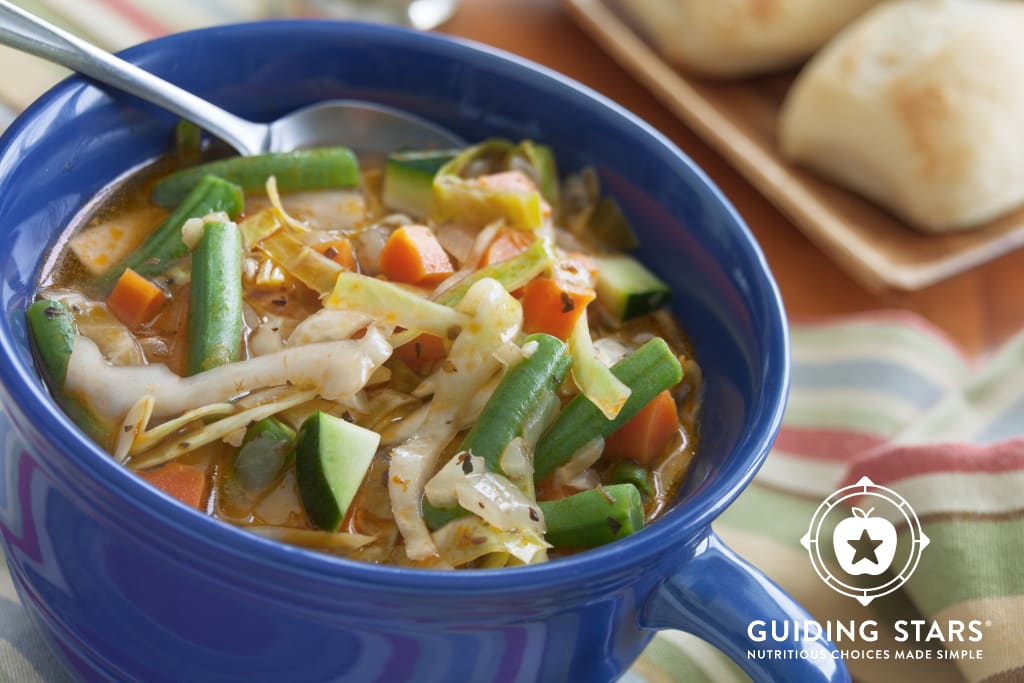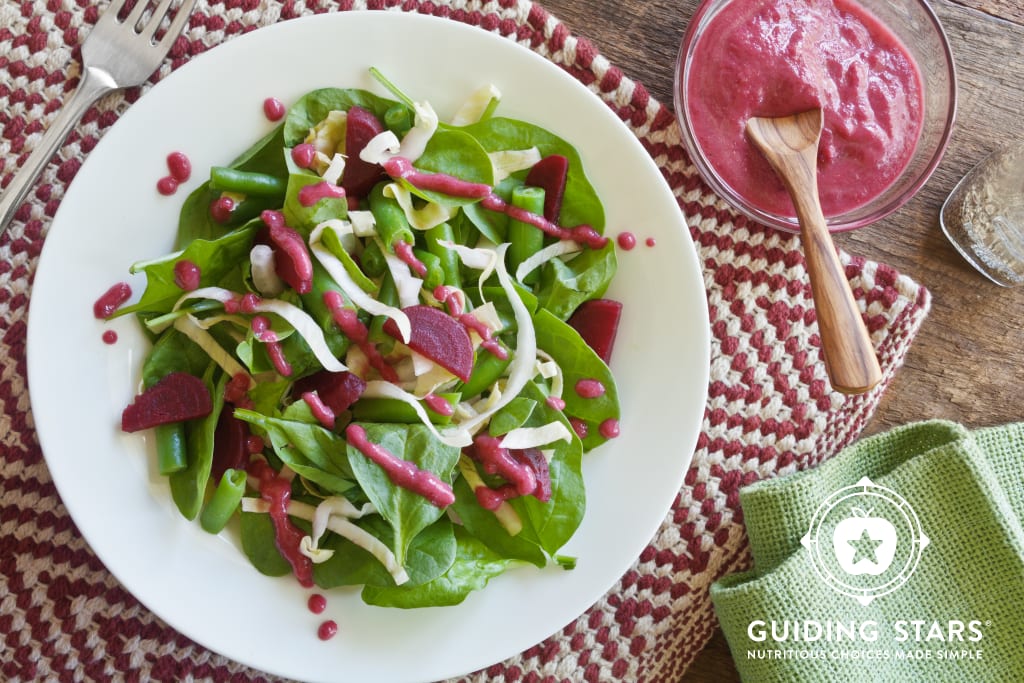Ever notice how pumpkins and apples seem to get all the autumn adoration? Don’t get me wrong, I love them both, and they show up frequently in my fall recipe rotation.
However, it’s harvest season—why limit ourselves?
Part of the joy of eating seasonally in the fall is getting to enjoy the abundant produce that’s available, all while it’s at its peak of freshness and quality (and often at lower prices than other times of the year).
Here are three of my favorite fall produce choices, along with ideas for how to work them into your meals. All three of these foods (in fresh form) earn 3 out of 3 Guiding Stars, so you know you’re getting the best nutritional value. So give yourself the benefit of autumn’s variety; who knows, you might find a new fall favorite!

Fall Pears
Talk about an under-appreciated fruit! Let’s give pears a chance, shall we? Pears of all types are in season during the fall months, meaning the selection is good and quality is high.
Pears are an excellent source of fiber (something most of us could use more of), but be sure to eat the pear skin because that’s where much of the fiber is found. They also are rich in folate, vitamin C, and potassium. Like apples, fresh pears make an easy and portable snack just as they are, but they are shine in recipes from sweet to savory.
Pear Recipe Ideas
Give them a try in baked desserts and breads, salads, over cereal or pancakes, and with savory entrees such as pork and chicken. Poached, sauteed, baked, roasted or made into a sauce or compote, you really can’t go wrong when you incorporate ripe, sweet, colorful pears into your fall dishes. Need a recipe? Here are a few Guiding Stars-earning pear recipes to try this season: Pear and Blue Cheese Flatbread, Cranberry Pear Salad, and Buckwheat Pear Chia Pancakes.

Fall Cabbage
There is a whole lot more to cabbage than coleslaw. Cabbage is widely available in several varieties, including the common green cabbage, but also red cabbage, savoy cabbage, napa cabbage, bok choy, and kale. You’ve got lots of options and plenty of nutrition reasons to eat more of this cruciferous vegetable.
Cabbage hasis well-known for its phytonutrients—natural compounds that have been associated with health benefits beyond vitamins and minerals. For example, red cabbage is rich in anthocyanins, pigments that help fight oxidative stress in the body that can lead to cardiovascular disease and neurodegenerative diseases. Glucosinolates in cabbage and other cruciferous vegetables have been associated with reduced cancer risk. Need more reasons? Cabbage is a caloric bargain at just 22 calories per cup—and it’s packed with vitamin C and a fair amount of fiber too (along with a wide variety of nutrients such as potassium and calcium).
Cabbage Recipe Ideas
If the wide world of cabbages is new to you, be assured that despite having different textures and colors, cabbage varieties can often be used interchangeably in recipes—especially in things like soups, stir-fries, and salads. If the smell of cooking cabbage is a turn-off for you, look for slow-cooker cabbage recipes (it helps keep a lid on the odor). Otherwise, check out these easy dishes and simple, yet tasty recipes: Garlic-Roasted Cabbage and Ginger Cabbage Saute.

Fall Beets
Thanks to the ubiquitous roasted beet-and-goat-cheese salad craze (that is still happening), beets have been buoyed from their place on the “most hated vegetable” list to starring on restaurant menus across the country.
You can’t deny that beets have got it going on in the looks department (that color!). And between the beetroots and the tops, or greens, you get twice the nutrition and value for your dollar when you purchase beets with the greens attached. Beets boast a bevy of nutrients: the greens get high marks for Vitamins A and K, as well as potassium and magnesium, while the beetroots are a good source of fiber and folate. There are even beetroot juice products marketed to athletes due to research indicating that a compound in beets can improve performance by increasing blood flow to muscles and extending exercise time.
Beet Recipe Ideas
Has the taste of beets kept you away? Consider that it may be because you just haven’t had them prepared in a way that appeals to you. You can’t beat the Guiding Stars recipe collection for healthy, family-friendly recipes—check out our beet-specific recipes. If you’re looking for a new way to use beets, try them raw: grate or thinly slice them into salads (the striped or golden beets are a pretty change of pace), or chop them to use in smoothies.
Of course, these rosy roots are more frequently sauteed, steamed or roasted, and served either warm or cold. Either way, fresh beets earn 3 Guiding Stars, but even the unadorned canned versions frequently earn 2 Guiding Stars (look for the low sodium versions if available). Sweetened beet-containing products, however, like juices, beet snack chips. and glazed or sauced beets are likely to earn just 1 Guiding Star due to their added sugar, and pickled beets lost points for added sodium.
Seasonal Eating is the Best!
No matter what produce you pick this Autumn season, if you want to see how the choices stack up nutritionally, check the Guiding Stars Food Finder to compare products before you head out to shop. In-store, look for the Guiding Stars nutrition guidance icon on shelf tags to help you locate delicious and nutritious options quickly as you shop.